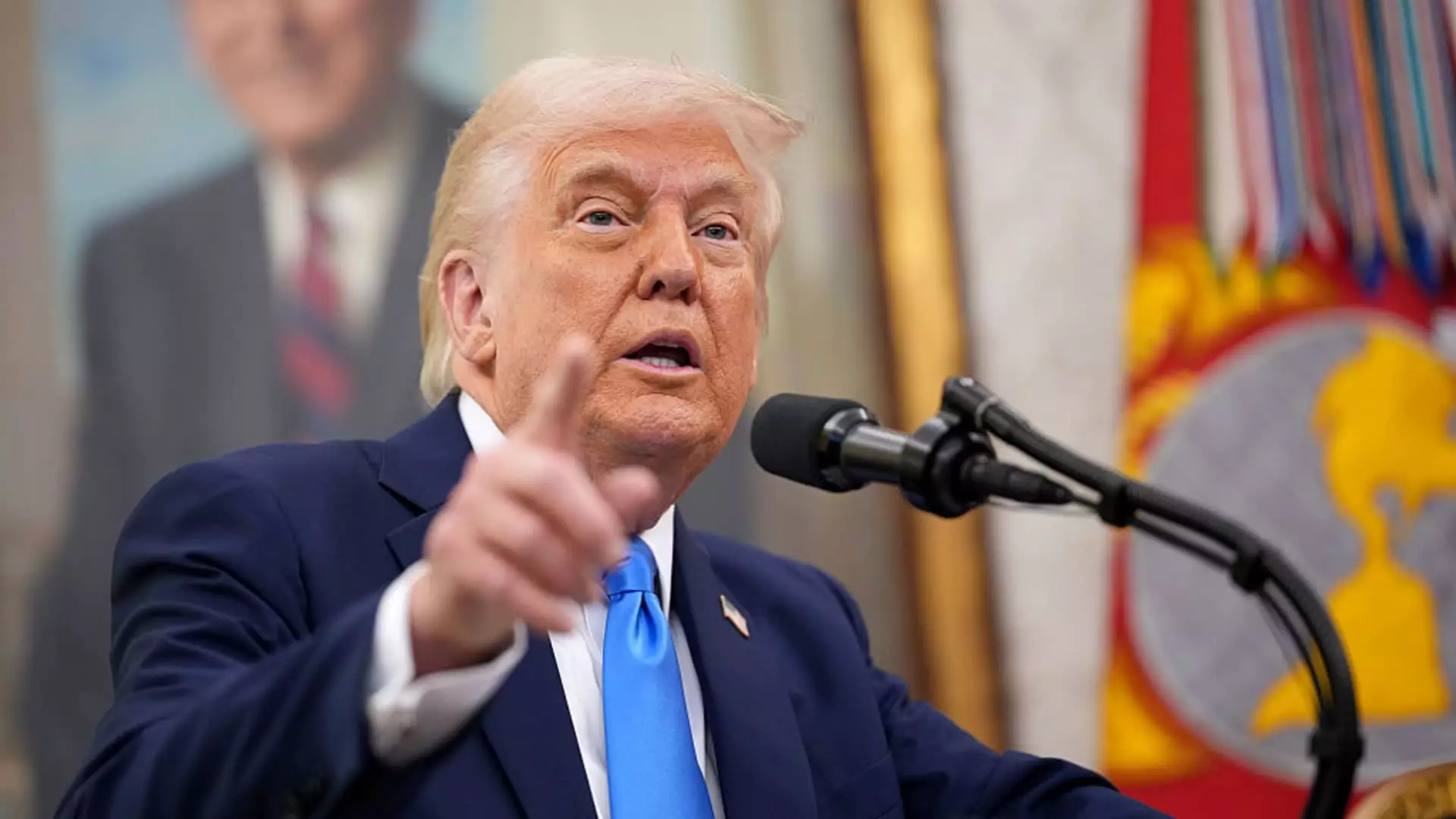When President Donald Trump takes to the podium to announce his latest round of tariffs, anticipation mingles with dread. This isn’t just another policy adjustment; it’s a declaration that some of the world’s most significant economies are about to enter a battleground of rising tensions and economic uncertainty. Dubbed as America’s “liberation day,” Trump’s plan threatens to reshape international trade relationships in ways that could stifle growth and deepen economic divides.
With tariffs, Trump professes a vision of fairness—one where nations with their own duties on U.S. goods face the repercussions of what he categorizes as unfair trading practices. But behind the bravado lies confusion. Americans are left pondering how these tariffs are calculated and, most importantly, who will bear the brunt. Will it be our long-standing allies or those countries that already perceive their relationship with the U.S. as adversarial?
Targeting the “Dirty 15”
The administration hints at a selective focus on what Treasury Secretary Scott Bessent calls the “Dirty 15”—countries that make up a disproportionate share of America’s trade deficit. But the details are frustratingly vague. Name those countries, and we can all brace ourselves for the economic repercussions. The ambiguity does little to bolster the confidence of American businesses; uncertainty is not a conducive backdrop for investment.
Economists warn us that Trump’s approach, while aimed at leveling the playing field, misinterprets the nature of trade deficits. Importing more than we export doesn’t necessarily denote a loss—sometimes, it signals a thriving economy with a robust demand for varied goods. Prosperity isn’t derived from erecting walls but rather from fostering cooperation and collaboration.
The Complexity of Global Relationships
The upcoming tariffs are poised to affect a plethora of nations—China, the European Union, and even Mexico. Yet, the actual list of targeted economies remains shrouded in ambiguity. Trump’s administration categorizes countries not by their role as allies or adversaries, but rather by their economic relationships with the U.S. As he ambiguously stated, everyone is in the crosshairs, which inexplicably casts a wide net over some of America’s closest partners.
This kind of sweeping policy does more than just raise costs; it terminally fractures relationships built over decades of trade and diplomacy. It sends a dangerous message: the U.S. is not only willing to forsake collaborative relationships, but it’s also prepared to alienate countries that have historically been aligned with American interests.
Consequences of an Overreaching Policy
As Trump furthers his agenda of imposing tariffs, questions arise about the ripple effects on everyday Americans. Higher prices will inevitably get passed down to consumers—whether at the grocery store or the car dealership—while domestic producers may find themselves struggling to compete with foreign markets that continue to operate without similar restrictions. This ineffectual cycle misaligns the interests of American consumers with Trump’s purported goal of protecting domestic manufacturing.
Let’s not kid ourselves: businesses thrive in an environment of predictability and stability. This wave of tariffs creates an atmosphere filled with risks, leaving companies caught in a web of uncertainty. When manufacturers weigh investments, few would place their trust in an economy where the rules can change overnight.
The Muddied Waters of Economic Warfare
Trump’s muddled messaging regarding tariffs highlights a vital risk in economic policymaking: the dichotomy between rhetoric and deliberate intention. His insistence that no country escapes his scrutiny dilutes the administration’s ability to craft a coherent strategy and instead sows confusion among allies and foes alike.
Many may cheer for the so-called liberating efforts to rid America of restrictive trade practices, but wise voices warn against the escalation of conflicts initiated by unilateral tariff impositions. Trade is a delicate ecosystem, one that, if left unchecked, threatens to buckle under the weight of escalating tariffs and retaliation.
In this nuanced landscape, it is crucial for policymakers to reinforce their focus on fostering diplomatic relations that enhance cooperation rather than draw lines in the sand. The future of trade will not be determined by the elasticity of tariffs but by the willingness of nations to collaborate towards shared prosperity.


Leave a Reply